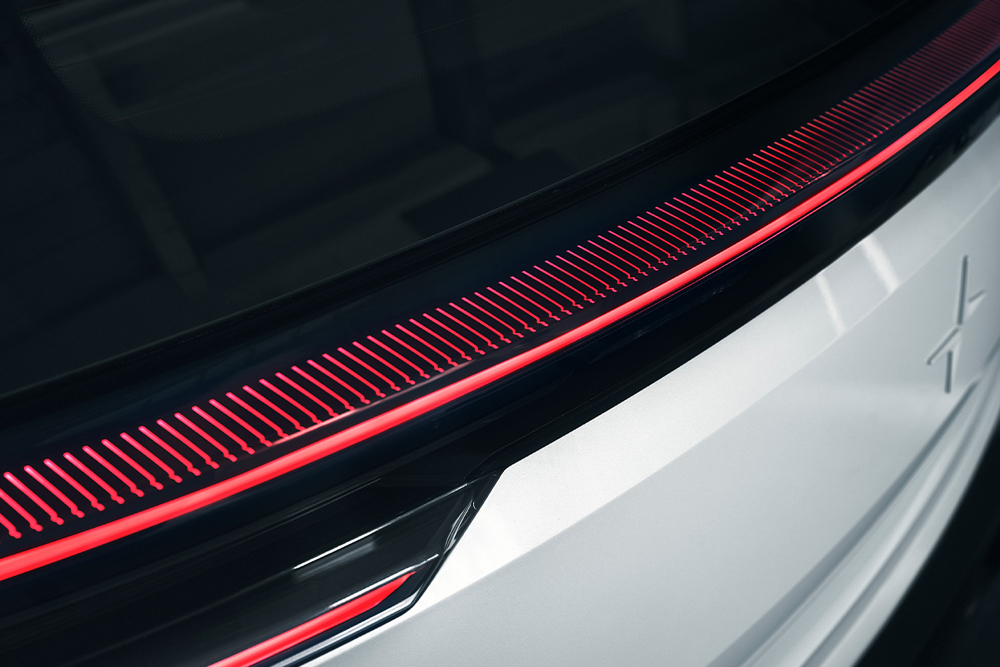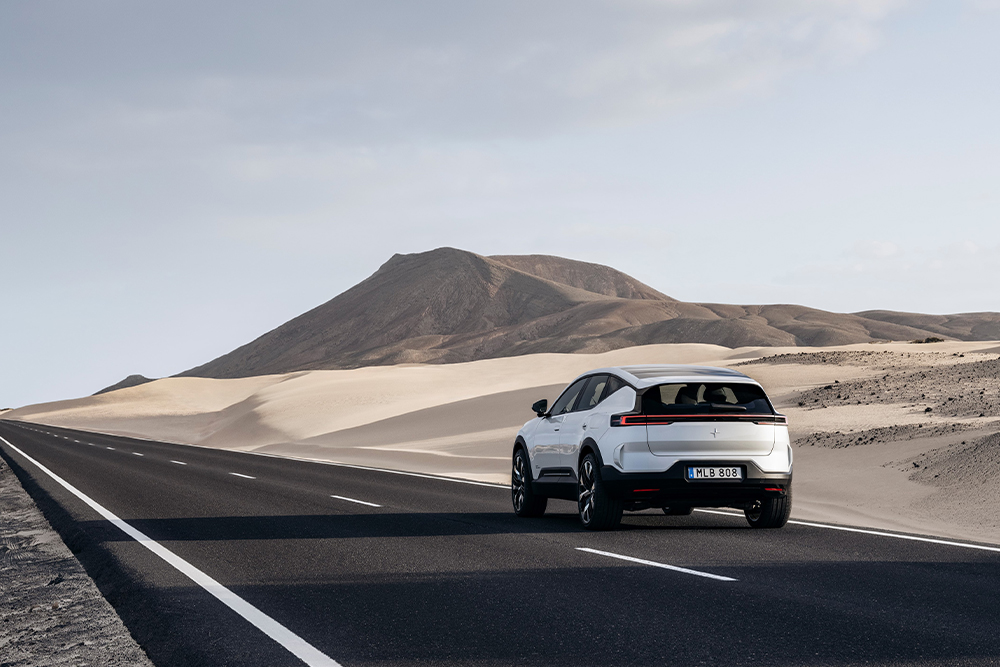Polestar 3: Close Encounters of the 3 Kind
Launched in October 2017, this all-electric brand, jointly owned by Volvo and the Swedish firm’s Chinese parent company, Geely Automobile Holdings, is on the move. Just five years on from its debut, the company has introduced their third production vehicle — the aptly named Polestar 3. Here are the nuts and bolts.
The Polestar 3 is a five-passenger luxury EV SUV that looks well-positioned to supercharge interest in the brand moving forward. While modern SUVs seem to be homogeneously blended together into a sea of jelly bean-shaped conveyances, the 3 amplifies the matter with strong design details that help separate it from the crowd.
Check out, for example, the front aero wing, recessed door handles, rear aero blades and another aero wing integrated into the rear spoiler. The long hood, sloping roofline, panoramic glass roof and long wheelbase reinforce the vehicle’s presence and hint at its status as a luxury, high-performance contender. The side mirrors are a slick design, the Polestar wordmark embedded in the LED headlights and taillights is a nice touch, and the SmartZone sensor cluster in the front fascia is suitably futuristic—more on that later.

2024 Polestar 3
1 of 9

2024 Polestar 3
2 of 9

2024 Polestar 3
3 of 9

2024 Polestar 3
4 of 9

2024 Polestar 3
5 of 9

2024 Polestar 3
6 of 9

2024 Polestar 3
7 of 9

2024 Polestar 3
8 of 9

2024 Polestar 3
9 of 9
At launch, with Canadian deliveries expected to begin in Q4 of 2023, the Polestar 3 will come equipped with a dual-motor configuration that generates 489 hp and 620 lb-ft of torque. With the optional Performance Pack added, output is boosted to 517 hp and 671 lb-ft of torque, empowering a 0-100 km/h sprint time of about 4.7 seconds. (By comparison, the dual-motor Polestar 2 with the Performance Pack delivers 476 hp, 502 lb-ft and roughly the same 0-100 km/h pace.)
To reinforce the fact that this is a high-performance SUV, a torque-vectoring dual-clutch system at the rear axle and an active air suspension system are also standard. The wheels are 21-inch numbers for the launch edition, while the Performance Packs adds Pirelli P Zero tires riding on 22-inch wheels.
The launch edition of the Polestar 3 comes fitted with a 111-kWh battery pack that provides an EPA-estimated range of 482 km (300 miles). With the Performance Pack fitted, there will be an expected 48-km (30-mile) reduction in range. When connected to a DC fast-charger, the state of charge can go from 10 to 80 percent in 30 minutes. The Polestar 3 supports bi-directional charging, so it can send battery charge back to the grid.
Representatives from Polestar indicated that there will be other versions of the 3 down the road; if the pattern established by the Polestar 2 is followed, that means we should expect a single-motor iteration before too long.

2024 Polestar 3
1 of 9

2024 Polestar 3
2 of 9

2024 Polestar 3
3 of 9

2024 Polestar 3
4 of 9

2024 Polestar 3
5 of 9

2024 Polestar 3
6 of 9

2024 Polestar 3
7 of 9

2024 Polestar 3
8 of 9

2024 Polestar 3
9 of 9
Inside, the Polestar 3 is definitely a more upscale environment than the 2, which landed squarely on the Spartan side of the debate. There’s the ubiquitous massive centre screen, 14.5 inches of real estate here to manage all your climate, directional and infotainment requirements. A smaller display mounted behind the steering wheel, effectively a floating instrument panel, houses the critical gauges and indicators. The in-car operating system is Android Automotive OS and over-the-air (OTA) updates are part of the equation.
The other notable feature on the Polestar 3 is the aforementioned SmartZone, a collection of sensors and lenses that the exterior design team have chosen to highlight rather than hide away. This area gathers together forward-facing sensors, a heated radar module and a camera, all systems engineered to inform the advanced driver assistance systems.
Starting next year, the optional Pilot Pack will add a LiDAR system, four more ultrasonic sensors and three more cameras. Polestar representatives referred to the 3 as moving the brand closer towards fully autonomous driving.
Beyond the rapid pace of product development for Polestar in their short history, there’s also a fair degree of swagger to their approach.

2024 Polestar 3
1 of 18

2024 Polestar 3
2 of 18

2024 Polestar 3
3 of 18

2024 Polestar 3
4 of 18

2024 Polestar 3
5 of 18

2024 Polestar 3
6 of 18

2024 Polestar 3
7 of 18

2024 Polestar 3
8 of 18

2024 Polestar 3
9 of 18

2024 Polestar 3
10 of 18

2024 Polestar 3
11 of 18

2024 Polestar 3
12 of 18

2024 Polestar 3
13 of 18

2024 Polestar 3
14 of 18

2024 Polestar 3
15 of 18

2024 Polestar 3
16 of 18

2024 Polestar 3
17 of 18

2024 Polestar 3
18 of 18
Their first car, the limited-edition Polestar 1, was a high-performance plug-in hybrid GT that retailed for over $150,000 (US). Then, two years ago, they created seismic shock by releasing a study comparing the cradle-to-grave CO2 emissions of the 2020 Polestar 2 versus a comparable non-electric vehicle they were familiar with, the 2020 Volvo XC40.
Such a brutal assessment of their own carbon footprint is exceedingly rare in the automotive industry—and this approach sets Polestar apart from many of its competitors in the space. At the Polestar 3 launch, representatives of the brand doubled-down on this daring stance, calling the supply chain for minerals needed to produce battery-electric vehicles “very, very corrupt.”
Up next for the brand will be the Polestar 4 (an SUV/coupe), Polestar 5 (a grand touring sedan), Polestar 6 (potentially, a 2+2 performance car) and, eventually, a completely carbon-neutral model they plan to debut in 2030. Until then, we have the incredibly appealing Polestar 3 to consider, with prices starting at $97,400 (CDN).
Learn more about the 2024 Polestar 3 here.
TAGS:
Polestar









